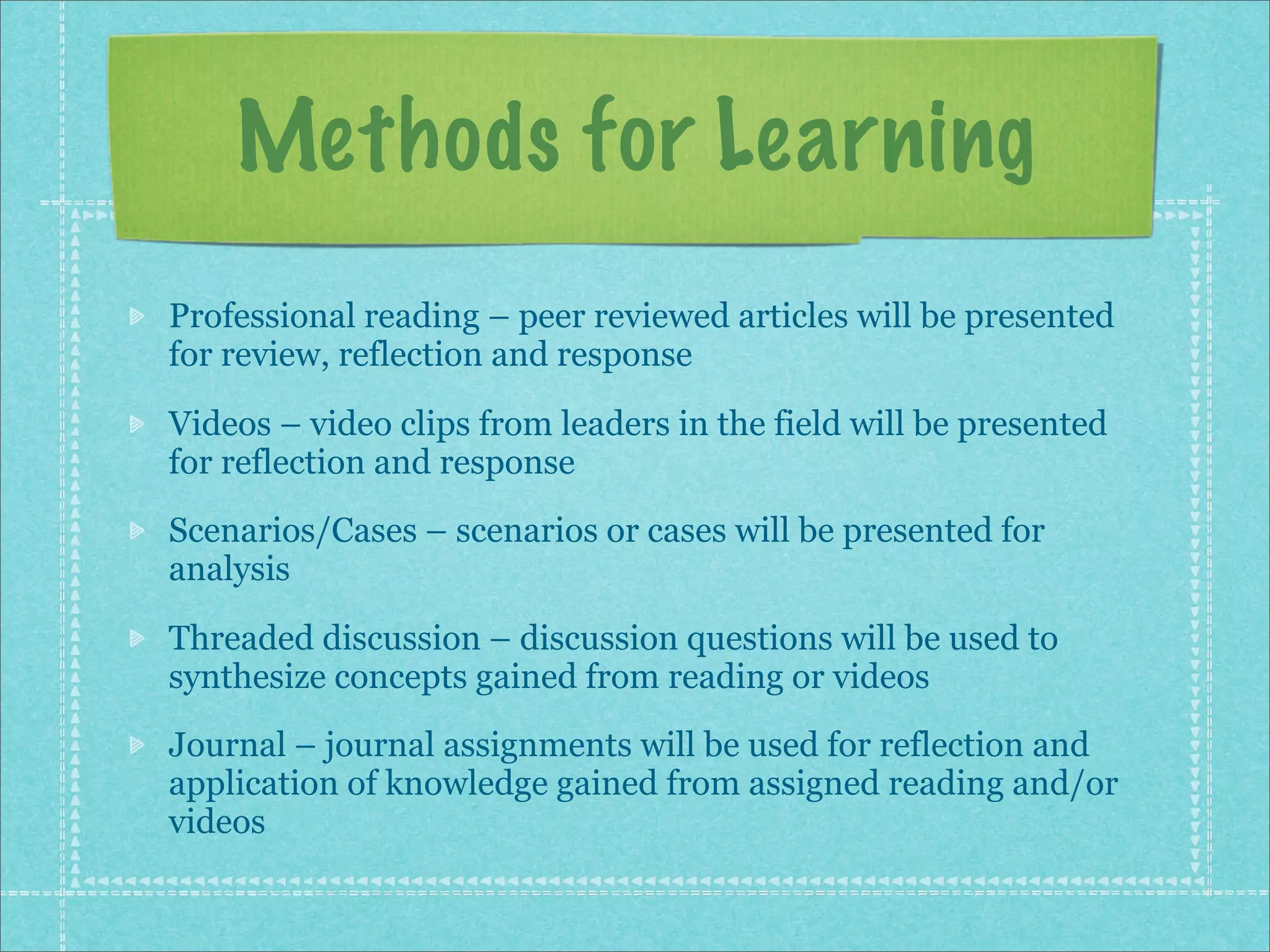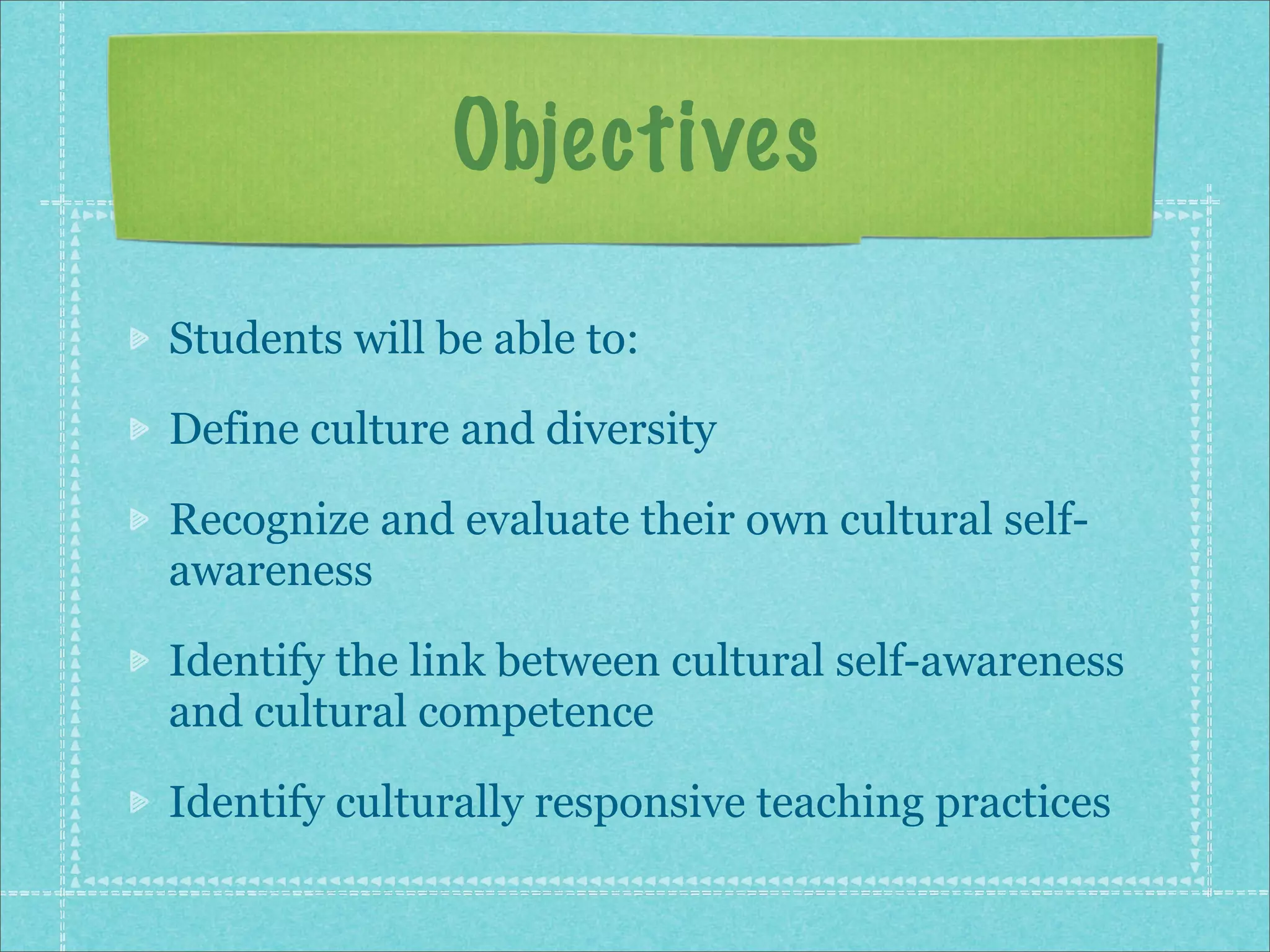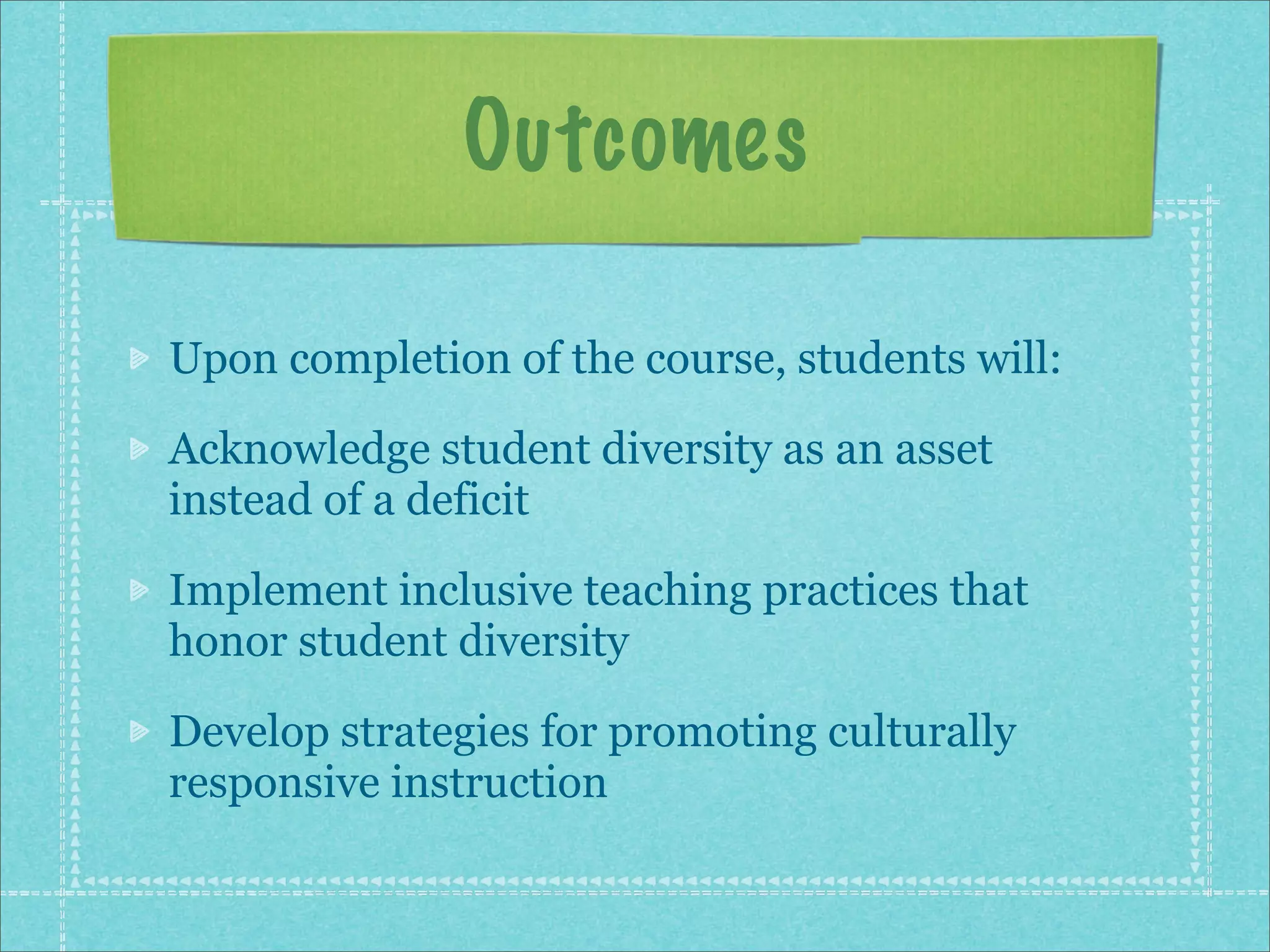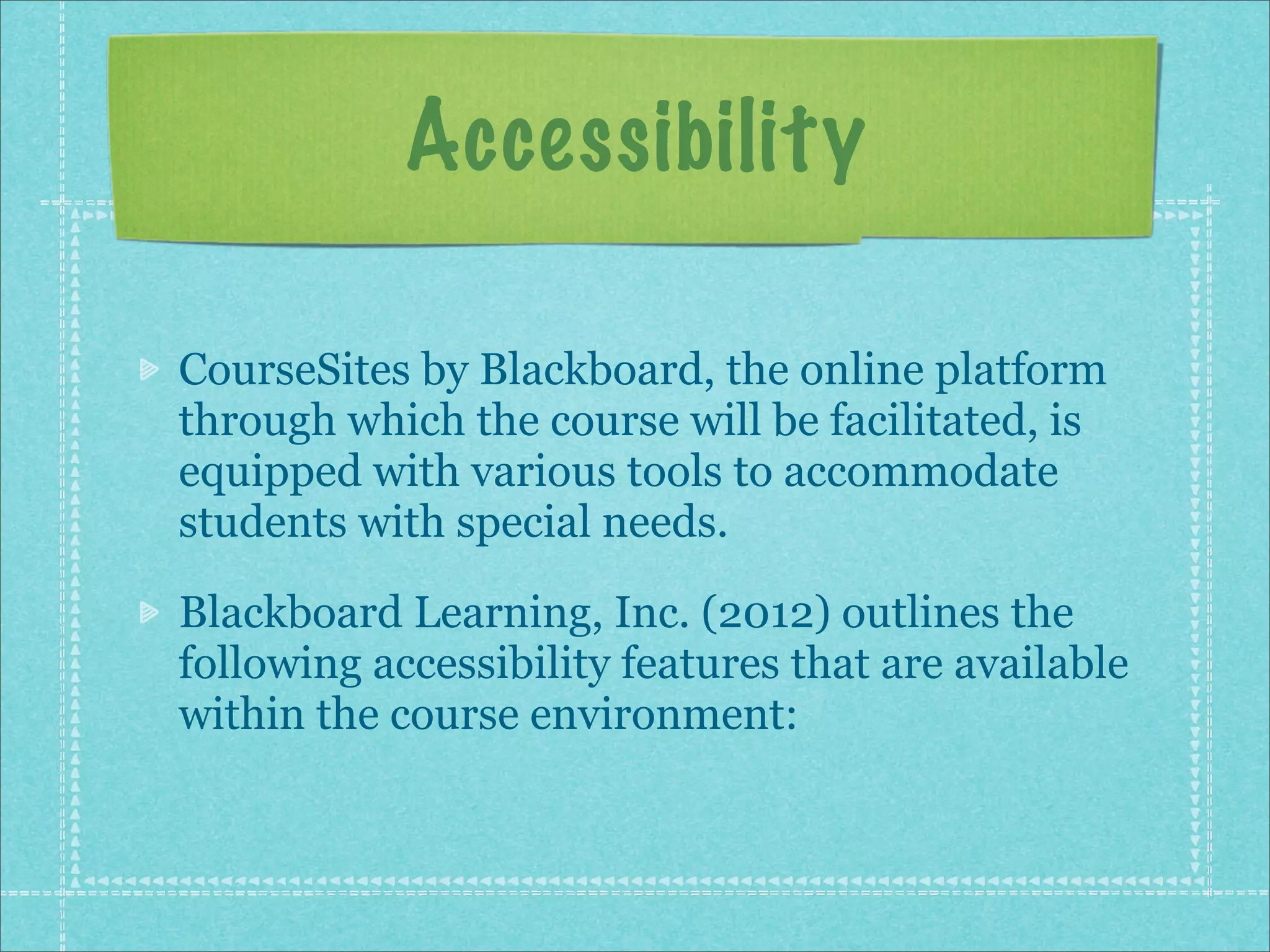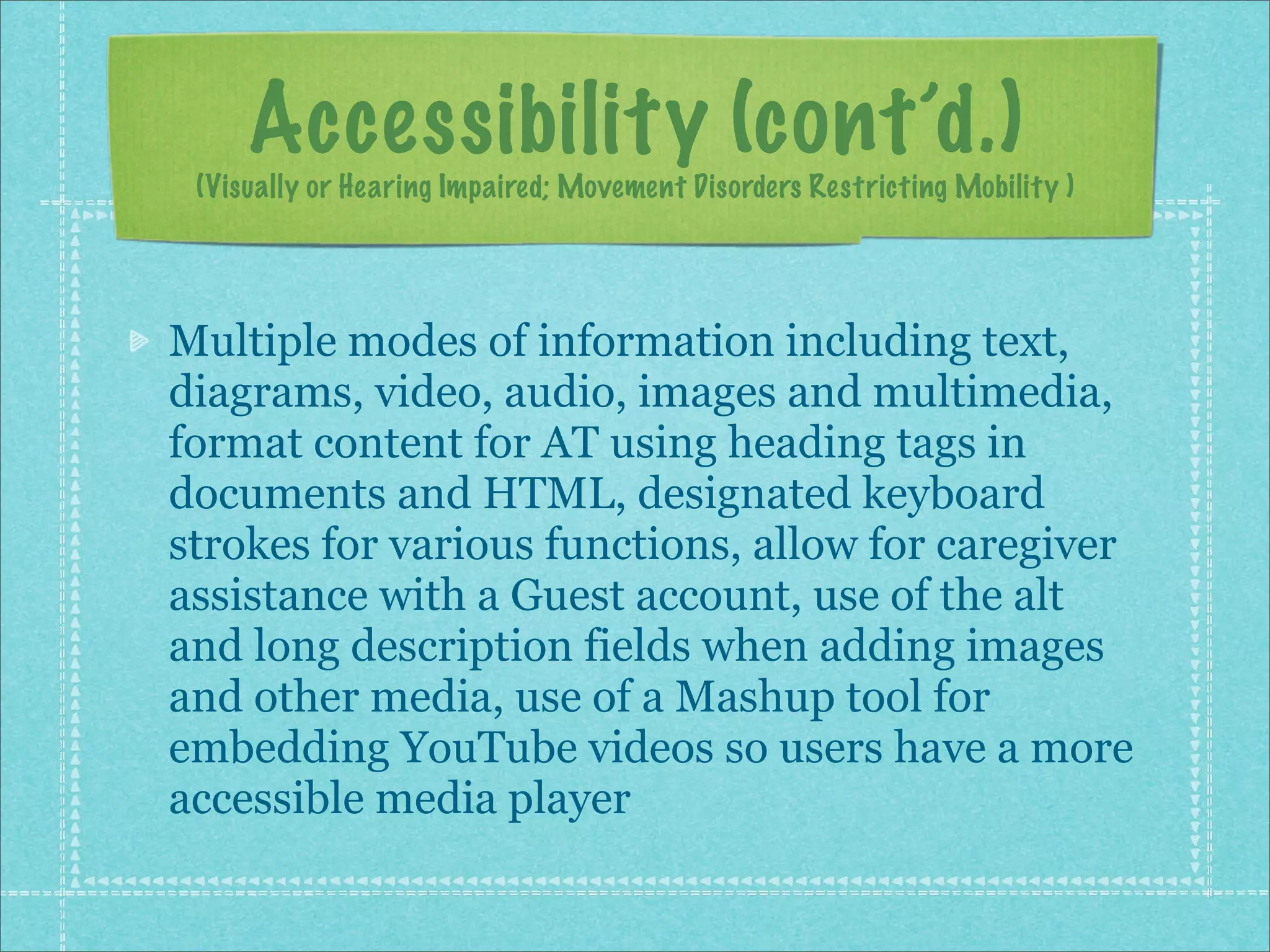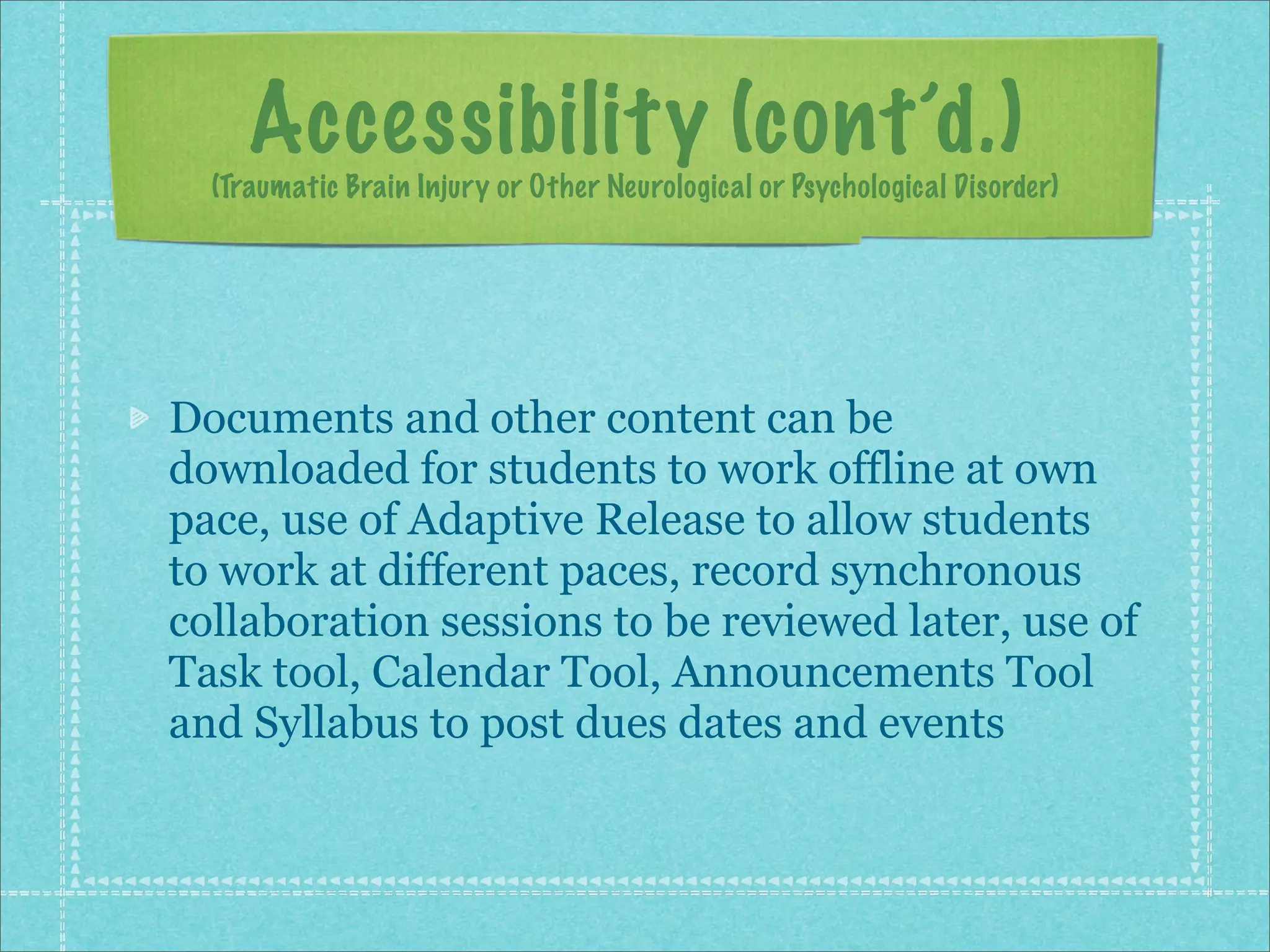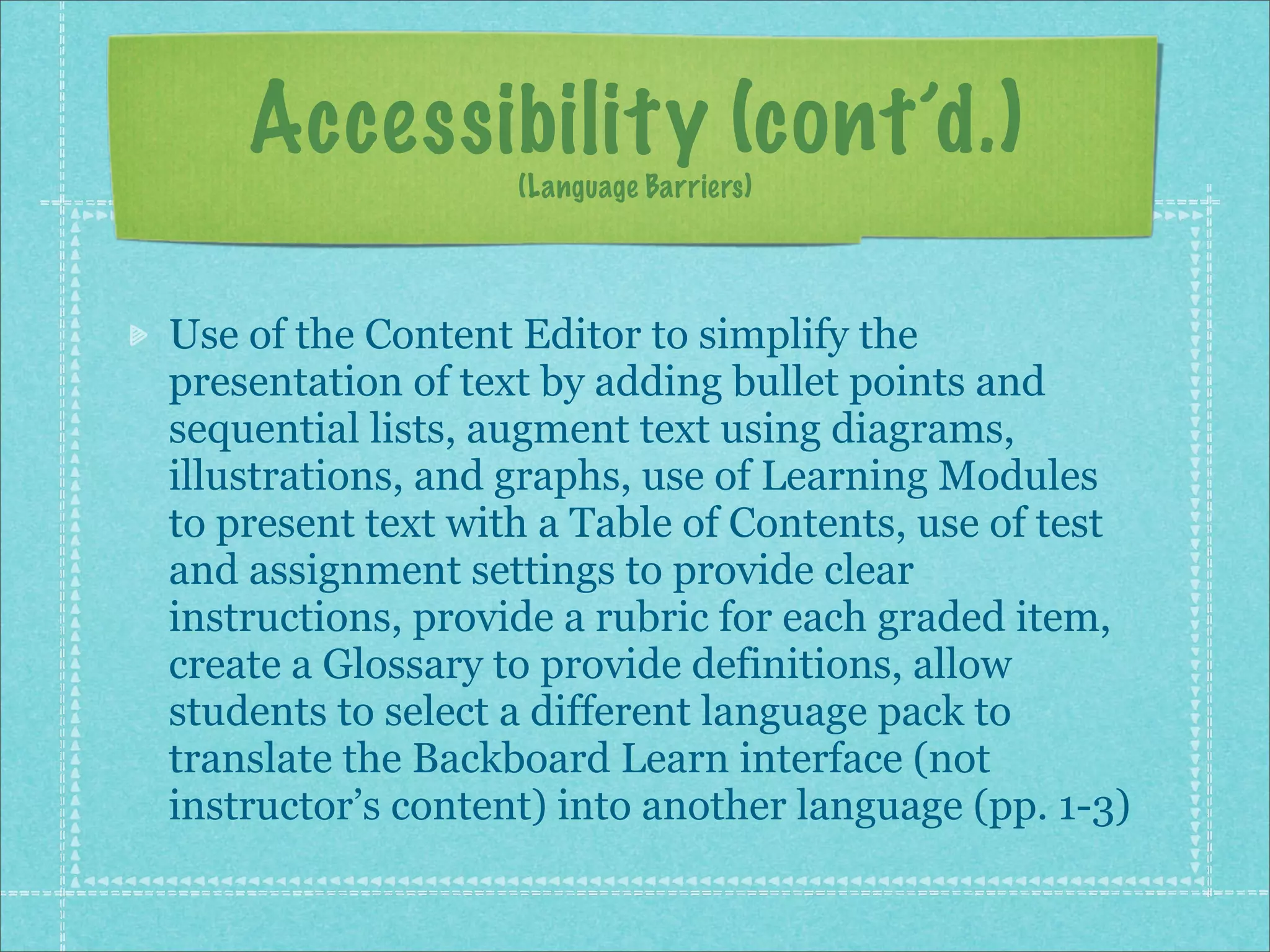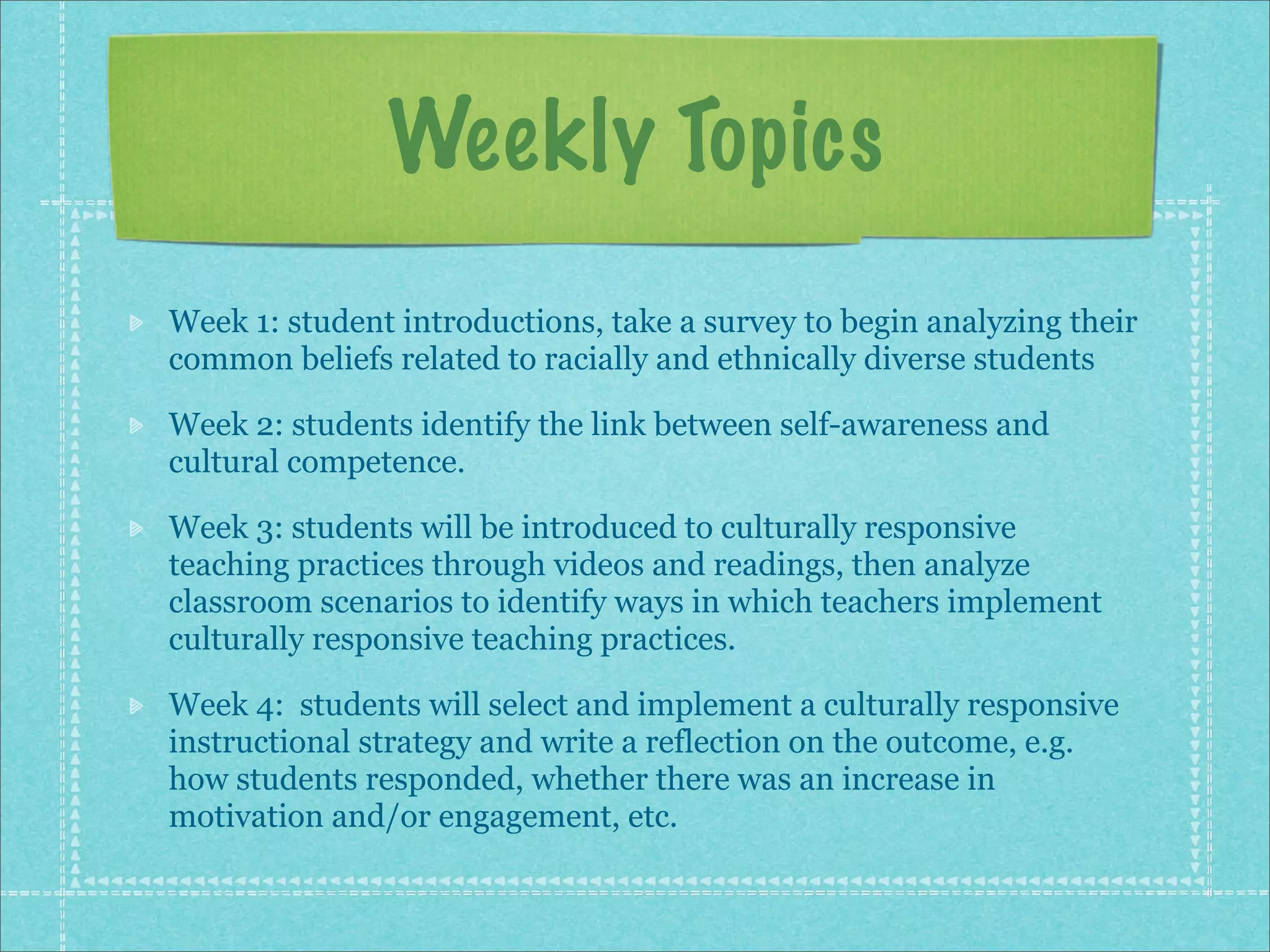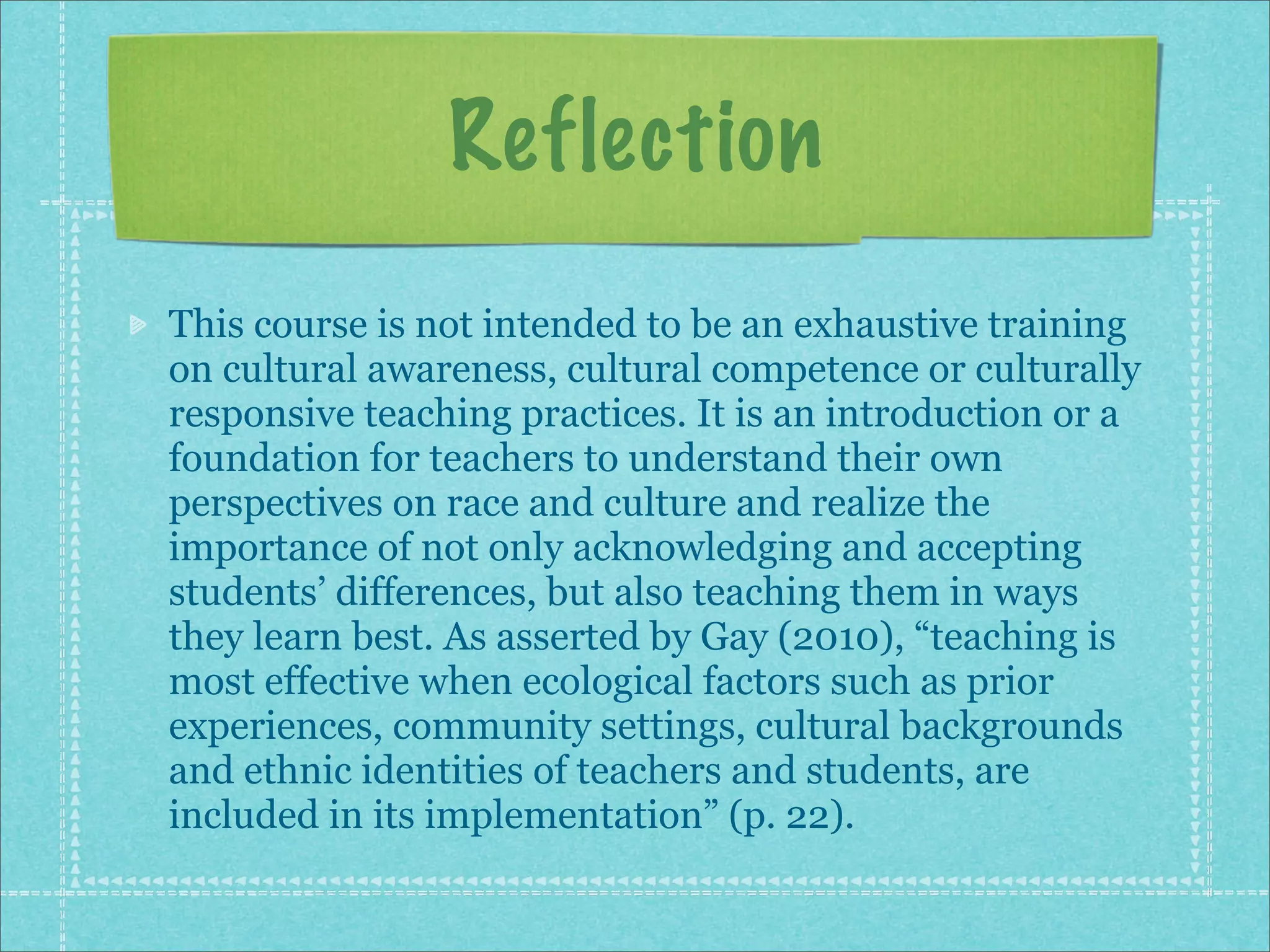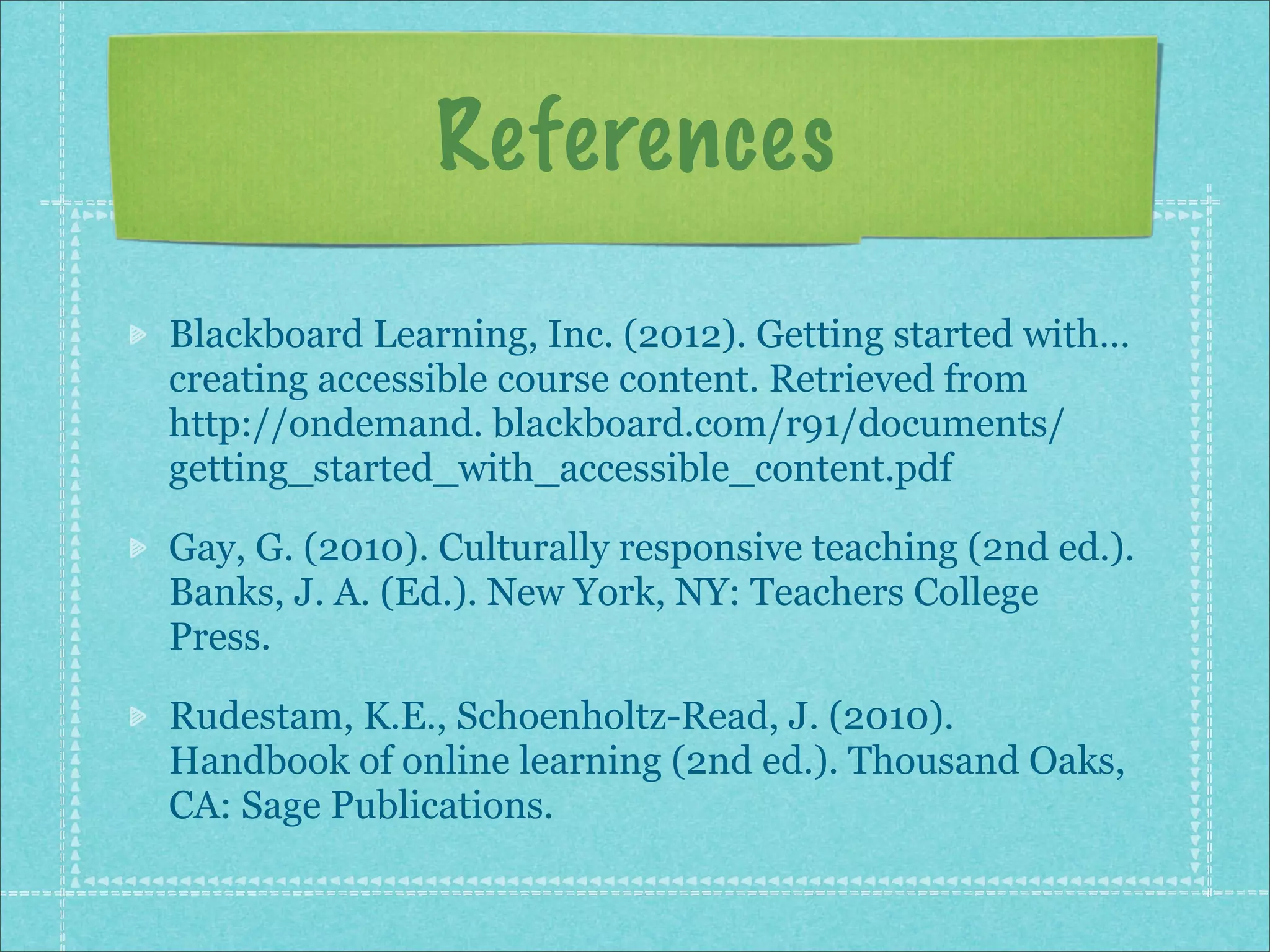This 3-credit course focuses on developing cultural competence and responsiveness in educators. Students will explore culture, diversity, and ways to create culturally responsive learning environments. The constructivist approach is used, with students relating concepts to experiences and engaging in discourse. Readings, videos, scenarios, and discussions are learning methods. Objectives are defining culture and diversity, assessing cultural awareness, and identifying responsive teaching practices. Outcomes include acknowledging diversity as an asset and implementing inclusive practices. The online platform is accessible. Weekly topics cover self-awareness, practices, and implementing strategies. A reflection addresses cultural awareness as a foundation for teachers.
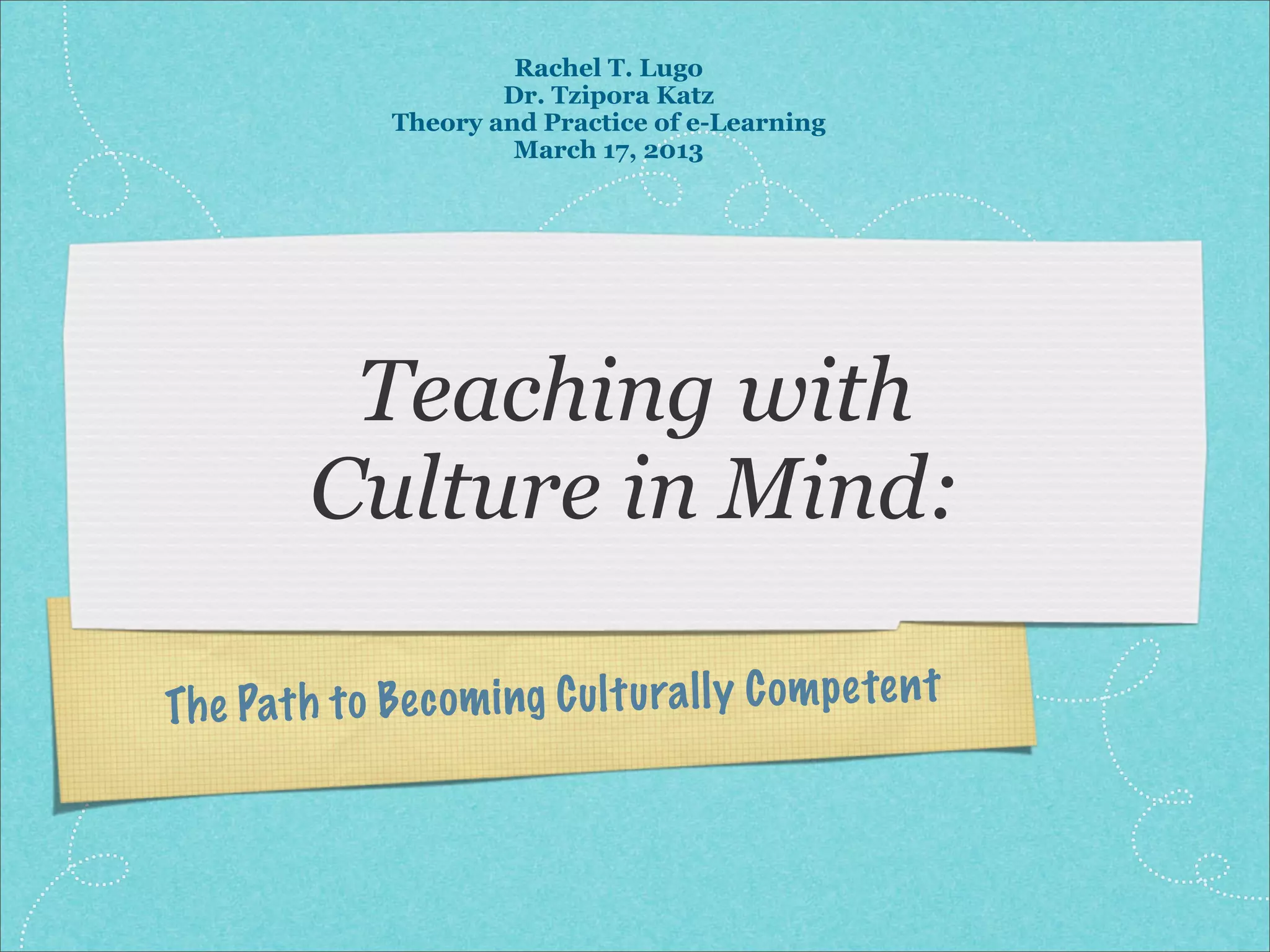
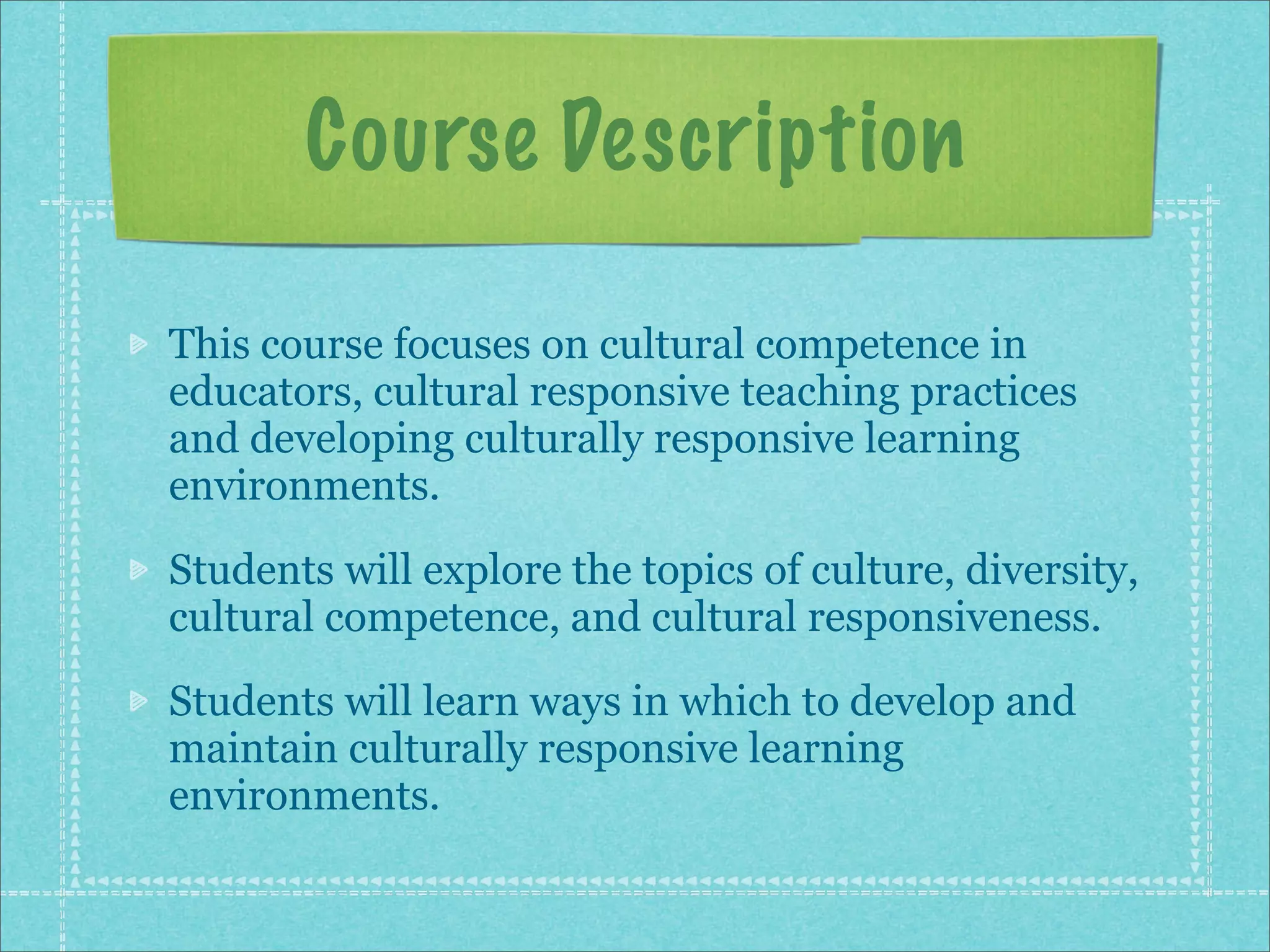
![Pedagogy
The course design focuses on the constructivist approach
to learning. As described by Rudestam and Schoenholtz-
Read (2010), the course “curricula [will] favor an open-
ended, negotiable approach that structures activities so
that students have opportunities to collaboratively
negotiate knowledge and to contextualize learning within
an emergent situation (p. 98).
After reviewing each week’s course materials, students
will relate learned concepts to their professional
environments and actively engage in discourse based on
their real-world experiences.](https://image.slidesharecdn.com/lugofinalproject-130317234144-phpapp01/75/Lugo-final-project-3-2048.jpg)
